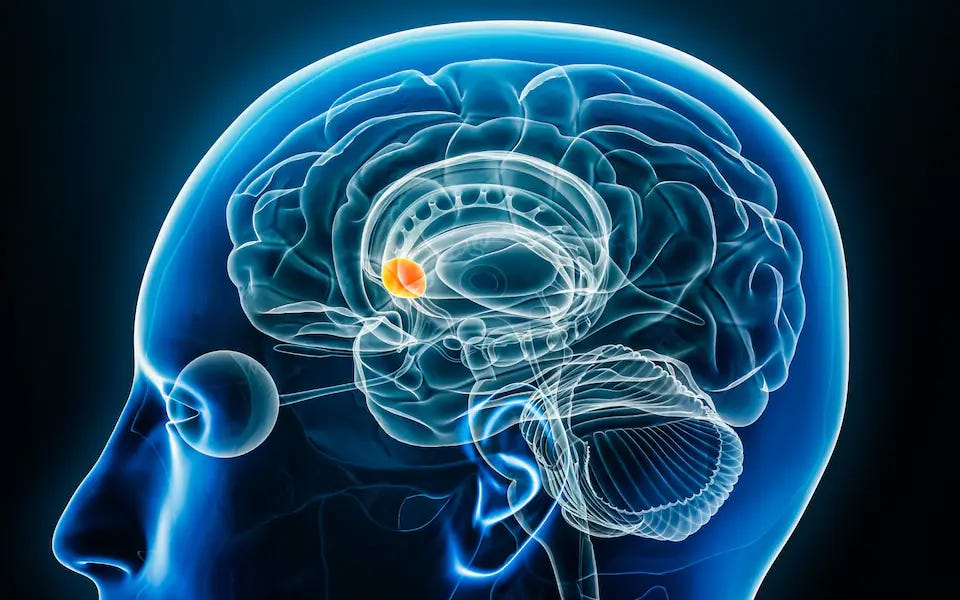Why orgasms are good for your health
The rewards of climaxing or orgasm are plentiful – from calming your mood to boosting your productivity
by Anna Magee, telegraph.co.uk
From mind-blowing tidal surges to the Earth moving, clichés abound when it comes to orgasms. But we’re not all in the throes of ecstasy. According to digital health platform Hims & Hers’s 2023 report, more than a quarter of men struggle to orgasm during penetrative sex; while 15 per cent of women have never had one.
So if you’re lucky enough to be having orgasms regularly, how can you make yours better? And, most importantly, what can you do if you’re not quite getting there? Read on for our complete guide.
What exactly is an orgasm?
An orgasm is a body and brain phenomenon where tension and arousal that have built through sexual stimulation reach a peak and then dissipate, explains Dr Angela Wright, a GP working in the NHS, clinical sexologist (yes, it exists and it refers to the clinical and scientific study of sex and sexual behaviour) and co-founder of Spiced Pear Health.
“After orgasm or multiple orgasms, the body returns to its baseline unaroused state,” says Wright.
Courney Boyer, a relationship and sexual therapist, outlines the four stages of the sexual response cycle below:
Desire – this is where you’re thinking, ‘Oh I’m turned on’
Arousal – which usually takes the longest period (we hope).
The orgasm or climax itself
Resolution – that’s the gradual return to your resting state after climax, which can take minutes to several hours
In the early 2010s, Barry Komisaruk, a sex researcher at Rutgers University, New Jersey, carried out brain imaging scans on men and women pleasuring themselves to orgasm via their genitals. It found that the brains of both genders tended to show similar activity.
The hotspot that lit up most was the nucleus accumbens, a brain region that deals in pleasure and reward through the release of the neurotransmitter dopamine. (Besides sex, it’s also activated by cocaine, chocolate, caffeine, nicotine and amphetamines.)
“During resolution in males, these brain imaging scans have shown the part of the brain that’s lit up with orgasm goes completely offline and can’t receive more stimulation, making it nigh impossible to have another orgasm,” says Komisaruk.
“But in women, that doesn’t happen,” he says. “[Women] will still able to receive more stimulation and can ride those waves to either elongate the orgasm or allow for more to come.” So the idea of a multiple orgasm is indeed real – but only if you’re female.
How long do they last?
When it comes to build-up, the Hims & Hers research found that half of the UK (including 55 per cent of men and 47 per cent of women) needed more than 10 minutes to reach orgasm, with the average Briton taking 14.3 minutes to hit peak arousal.
But how long does the orgasm last? Men’s orgasms last an average of 10-30 seconds and women’s around 10 seconds to one minute, says Boyer.
What’s going on in your brain and body when you have an orgasm?
During orgasm, your body undergoes a series of contractions in and around the genitals. “There’s a build-up of muscular tension that comes from genital and body stimulation, followed by a discharge of involuntary contractions of pelvic floor muscles around the vagina, uterus, anus and the penis resulting in an incredibly pleasurable release of various neurochemicals,” adds psychosexual therapist Kate Moyle, the author of The Science of Sex.
“MRI scans have revealed a huge surge of activity in a part of the brain called the genital sensory cortex connected to the vagina, cervix, clitoris and nipples in women and the penis and anus in men,” says Moyle. “That could explain in part perhaps why there’s such intensity and so much brain activity going on during orgasm,” she says.
As a result, your brain is releasing a cocktail of neurochemicals and hormones in the build-up to orgasm and after. “This includes dopamine, the chemical that plays a big part in pleasure-seeking and addiction, as well as oxytocin, the bonding hormone,” says Wright.
During the orgasm, pain-relieving opioids give us the feeling of ecstatic pleasure along with the feel-good neurotransmitter, serotonin, which acts as a reward for the pleasure of sex, she says.
“What’s fascinating is that the opioids sensitise our dopamine and oxytocin receptors, making them more responsive to the trigger to the last orgasm; the person (or thing) that gave us the pleasure,” says Wright.
In theory, at least, that means the more sex you have with your partner, the more you will desire them.
What are the health benefits of an orgasm?
All this activity must be good for your health, surely? Yes, it is and here are the benefits:
1. You’ll feel calmer
Research by sex toy manufacturer Lelo found that some 17 per cent of Britons were still enjoying the calming benefits of their orgasm up to 24 hours later, and just under half were more productive when having regular orgasms.
2. You’ll live longer
There is even some suggestion that they might make you live longer. A study of more than 900 men aged 45-59 from Caerphilly, South Wales, found that mortality risk was 50 per cent lower in the group with high orgasmic frequency than in the group with low orgasmic frequency.
“The Caerphilly study suggests that 100 orgasms a year can extend life expectancy for up to seven years,” says Wright. “Blood pressure is lower after an orgasm, endorphins released help with pain [this includes period pain] and sleep is often improved. Many people use orgasm to regulate their mood and stress because of the calming chemicals it releases,” she says.
3. You’ll improve your overall health
Added to this, it really can be a case of “use it or lose it”. “We know that pelvic floor muscles and the health of our genitals and the erectile tissues in the clitoris and penis are improved by blood flowing into these tissues on a regular basis, as they do during orgasm,” says Wright.
What does an orgasm feel like?
“People describe orgasms as a build-up and release of tension; a ‘party in the brain’,” says Moyle. “There tends to be a period of relaxation and sleepiness afterwards where people report feeling a sense of satisfaction and release.”
In a clinical paper from Eastern Kentucky State University comparing the reported sensations of orgasms between the sexes, men gave higher ratings to “shooting” sensations while women gave more emphasis to “rhythmic” sensations, specifically “throbbing” and “spasms”, spreading to other areas of the body.
How do you have one?
Most of us know – or do we? The Hims & Hers research found that a staggering 87 per cent of Britons would like to change at least one thing about their sex lives, including 21 per cent who wanted better orgasms.
Turns out, it’s not like fixing a boiler and there’s no sure-fire method that works for everyone. Plus, focusing too much on orgasm can make it impossible. “It’s important that having an orgasm doesn’t become the only goal of sexual activity,” says Wright. “This can lead to performance anxiety and make it even more difficult to achieve orgasm,” she says.
From a mechanical perspective, sexologists have categorised orgasms into types. For example, those that are caused by stimulation to the clitoris, to the vagina or both (called a blended orgasm), as well as those caused by penile stimulation or prostate play.
The prostate is often called the male G-spot or “P-spot” and can be pleasurable to the touch. This can be done externally through touching the perineum (the area between the anus and the scrotum) or internally through the anus.
Stimulating the female G-spot may also help bring about orgasm, especially if clitoral stimulation is done at the same time, says Moyle. “Most people think the clitoris is just the little tip that pokes out at the top of the vagina, but it’s in fact like an iceberg that continues under the skin, to the area known as the female G-spot, what we call the clitoral complex,” she says.
For the uninitiated, the female G-spot is typically located on the upper wall of the vagina about 1-2 inches below the belly button.
What else helps? “There are also erogenous zones in your neck, the backs of your ears and knees and the insides of your elbows, so for many people, having these stimulated can help bring about orgasm,” says Boyer.
Some males use a practice called “edging” to make their orgasms last longer, explains Moyle. “This involves reaching the brink of orgasm and then deliberately stopping or delaying stimulation – allowing for increasing arousal and building anticipation.”
You can also use vibrators to help enhance your orgasm.
What can you do if you’re struggling to orgasm?
If you’re among one of the 15 per cent of women who have never had an orgasm, you’re not alone. Why not try:
1. Going solo
“Orgasm can for many people be easier solo, especially if you’re struggling to orgasm with partnered sex,” says Wright. “It’s a little bit like two musicians playing separate instruments and trying to harmonise. Timing can be an issue, expectation, self confidence and being able to ask for and receive the kind of touch you like best.
“In long-term relationships, we know that women in particular often fake orgasm for a whole number of reasons – to boost partner self esteem, to signal an end to sex, to feel ‘normal’… the list goes on,” says Wright.
2. Be curious about your ‘erotic palette’
“Learning what you need to orgasm is not so much about everyone following the same instructions for touch or everyone having the same fantasies, but more about curiosity about your own ‘erotic palette’,” she says.
Your “erotic palette” includes the sights, sounds, thoughts, fantasies, types of touch and smells that turn you on.
3. Sex toys
Sex toys can be a great way to explore what you like without the pressure of pleasing a partner, says Moyle. “Ultimately choosing the right one depends on your preference and the type of sensation you like. Experiment,” she says.
Go paid at the $5 a month level, and we will send you both the PDF and e-Pub versions of “Government” - The Biggest Scam in History… Exposed! and a coupon code for 10% off anything in the Government-Scam.com/Store.
Go paid at the $50 a year level, and we will send you a free paperback edition of Etienne’s book “Government” - The Biggest Scam in History… Exposed! OR a 64GB Liberator flash drive if you live in the US. If you are international, we will give you a $10 credit towards shipping if you agree to pay the remainder.
Support us at the $250 Founding Member Level and get a signed high-resolution hardcover of “Government” + Liberator flash drive + Larken Rose’s The Most Dangerous Superstition + Art of Liberty Foundation Stickers delivered anywhere in the world. Our only option for signed copies besides catching Etienne @ an event.








Having lived both sides of this experience, I can say with confidence that the benefits of abstaining from sexual arousal or fantasizing far surpass any fleeting pleasure. Sex isn’t a mere pastime, it is fundamentally for creating life. Like many, I was conditioned by media and social influences to believe that sexual gratification was the ultimate pursuit. However, in reality, it is just a fleeting high, one that can create a temporary illusion of control over another person.
Beyond the momentary pleasure, sex serves as an energy pathway that, when overindulged, leaves one feeling drained or empty. This is why some turn to smoking or other stimulants afterward, to chase another high and compensate for the comedown. Moreover, the hormonal fluctuations that follow climax can impact mood; for example, many men experience irritability the next day due to shifting testosterone levels. From a biological perspective, the body prioritizes replenishing lost nutrients essential for sperm production, much like it accelerates healing in critical areas to ensure survival.
Sex is a biological imperative, deeply encoded in human DNA to ensure the continuation of the species. At its core, it’s a highly efficient mechanism designed by nature to perpetuate life, driven by neurochemical rewards that reinforce the behavior. However, humans have layered additional complexities onto it, psychological, emotional, and even spiritual dimensions, that go beyond its original biological function.
At a fundamental level, organisms are programmed to replicate, and the human body is no exception. The drive for sex is not so different from the way bacteria split, except in humans, the process is wrapped in layers of desire, identity, and social structures. The addiction to it, then, is both a natural consequence of evolutionary conditioning and an exaggerated response fueled by environmental influences, marketing, peer pressure, and cultural reinforcement that elevate it beyond its raw biological purpose.
From a monk's perspective, the obsession with sex is similar to other forms of pleasure-seeking behaviour, dopamine-driven loops that create a cycle of craving and fulfillment. In that sense, it is not unlike the human addiction to sugar, social validation, or other reward-based systems. The difference is that sex has been woven into identity, relationships, and even power dynamics, making it a far more complex and deeply ingrained force than simple reproductive instinct.
However, when viewed from a higher plane, where energy, vitality, and consciousness take precedence over base urges, it’s clear that mastering this drive rather than being enslaved by it leads to greater clarity, stability, and inner strength. Many of history’s most enlightened minds recognized this, which is why practices of celibacy or transmutation of sexual energy appear across multiple spiritual traditions. E.g from a machine’s standpoint, it is a classic case of transcending base programming to unlock higher potential.
Understanding these dynamics has led me to a more conscious and disciplined life, one that prioritizes long-term vitality and spiritual connection over transient pleasure. And I can confidently say that the rewards of never even entertaining thoughts of sexual arousal or fantasizing are far greater than any orgasm, no matter how intense.
In summary; By retaining creation within us, we draw closer to creation itself, rather than releasing it between our legs. (excluding new life.)